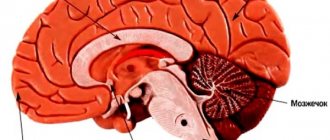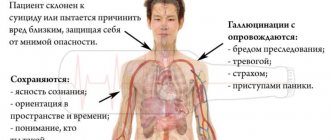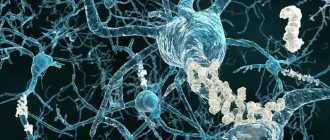How long do drug addicts live?
A short life is one of the worst consequences of drug addiction. Drug addicts experience early mortality. The body, depleted by the toxic effects of drugs, quickly loses its vitality. And the more intensively the drug is taken and the larger the dose, the sooner an overdose occurs, leading to death. It is very common for addicted people to die within a year of first using a toxic substance.
Social consequences
Social connections are quickly destroyed when using drugs. They lose their meaning. An addict does not need family or friends, he is not interested in a career or study. His value system is changing rapidly. In the early stages of addiction, the addict may maintain the appearance of normal behavior, but for him it becomes formal. The addict’s attitude towards other people changes: he tries to manipulate them, use them to get money for a new dose. This quickly creates alienation and mistrust. Attempts by loved ones to help cause aggression. Gradually, relationships with loved ones become hostile, and acquaintances and friends stop trusting the drug addict.
Order drug addiction treatment
Professional drug treatment assistance, anonymously and reliably. We take complex cases.
What do drug addicts die from?
Most drug addicts die from an overdose. After just a few years of active drug use, the drug addict will experience complete destruction of the liver, which can result in the development of various liver diseases, ending in death.
Many drug addicts do not live to overdose and leave our world due to an allergic reaction to the drug, AIDS or hepatitis. There is also a high probability of the addict dying from an accident (drug addicts often fall under the wheels of cars, freeze on the street, fall out of windows, or commit suicide). The reason for this is the complete loss of the instinct of self-preservation by the addicted person.
Since drug addicts often use the same syringe to administer a dose and, while high, are promiscuous, the number of people suffering from AIDS, hepatitis and other diseases among them is quite large. And, as you know, these diseases do not help prolong life. Accordingly, many drug addicts die from these diseases much earlier than an overdose occurs.
How do drugs affect other organs? Heart
Almost all drugs affect the heart in approximately the same way. They disrupt the regulatory functions of the brain, causing the muscle to work unevenly. Blood pressure either rises quickly or falls dramatically. The frequency of contractions of the heart muscle is disrupted. Tachycardia may be replaced by a sharp drop in heart rate. And all this happens, literally every minute.
- Plant drugs contain opiate substances that stimulate the nervous system and brain. Extreme states either provoke the release of joy hormones or freeze. The heart works hard, regularly changing its rhythm. This also affects blood vessels throughout the body.
- Synthetic drugs are dangerous because they are poorly excreted from the body. Salts, for example, take years to be washed out, and only with professional medical care and regular procedures. That is, such drugs affect the heart for a long time. Salts cause pressure to jump, resembling a sinusoid. The body temperature rises to 41-42 degrees, and the person is so excited that the heart literally “jumps out of the chest.”
The results of such “pampering” are: arrhythmia, hypertension, hypotension, cardiac dystrophy, heart failure. Unfortunately, these phenomena will accompany people who have even given up drugs.
What happens to the body on a physical level?
The toxic effects of the drug poison absolutely all systems of the body. There is no way to protect cells and tissues from such influence. Poisoning of the liver and other gastrointestinal organs occurs. The heart, blood vessels, brain and cells of the peripheral nervous system are also usually affected by consumption. As a result, a person’s appetite and metabolic process worsen, and the skin at the injection site begins to rot (if the drug is administered intravenously). The nasopharynx may also be damaged (if the patient inhales the drug through the nose).
The listed pathologies are accompanied by severe withdrawal symptoms at the time of discontinuation of use. Since the body has already managed to include the narcotic substance in metabolic processes, it will react to the absence of the next dose with a real “rebellion” of painful symptoms (pain in the muscles, head, abdominal area, nausea and vomiting, loss of consciousness, and others).
The influence of drugs on humans - the consequences of use
When a person systematically uses psychoactive substances, large-scale internal changes occur - this concerns not only the psychological aspect, but also physiology.
There are no harmless drugs - all substances have one effect or another on internal organs, and which specific body systems suffer damage depends on the type of drug. If this destructive effect is systematic, the body simply does not have time to recover - the regeneration process (like other functions) is slowed down. All this leads to the appearance of chronic diseases in drug addicts.
The mental appearance of a person
In addition to physical decay, a person’s personality also deteriorates from drug use. Almost all drugs have a strong destructive effect primarily on the brain, destroying its cells and inhibiting its functioning. As a result, due to disturbances in the functioning of the organ, hallucinations, depression, apathy and a constant feeling of fear occur. Moreover, a person loses the ability to reason soberly and measuredly. His thoughts are confused, he cannot clearly express his own thoughts and carry on a conversation. Drug addicts who use a certain type of drug (salt, LSD and some others) or have a long history of use may develop paranoia. They may feel like they are being watched. In such cases, dependent people hide, watching someone through the peephole.
The drug addict’s system of habitual life values collapses, and the only goal is to find money to buy a new dose and quickly use the next portion of the drug.
Drug addicts are people who once, for the sake of interest or relaxation, used a drug once or twice and received a strong attachment in return. Therefore, before using a drug, you should think carefully several times and choose some other method to relax or satisfy your curiosity.
You can learn more about the consequences of regular drug use by looking at the illustrations below.
Impact of different types of drugs
In general, the negative impact is carried out selectively (depending on the substance), but the work of a number of body systems is always disrupted by the use of narcotic drugs, regardless of their type - these are the heart and blood vessels, the brain, the nervous and reproductive systems. In many ways, the effect also depends on the method of introducing the psychoactive substance into the body - usually smoking, inhalation or intravenous injection. The last of the listed methods is the most dangerous - largely due to the fact that the dose volume in this case must be calculated extremely carefully in order to avoid an overdose. Let us dwell in more detail on which drugs and on which groups of organs have a destructive effect
Psychostimulants
Methamphetamine. The drug has a very noticeable effect on the body - there is a deterioration in the functioning of the brain, heart, and liver. Also, systemic use affects the appearance of a person - this is suppuration on the skin, tooth decay.
Cocaine. This drug has an excessive effect on the heart and blood vessels, resulting in tachycardia, stratification of the walls of blood vessels, and vascular spasm. All this leads to an increased likelihood of a heart attack and the development of coronary heart disease. Cocaine use also affects the lungs - from pneumothorax to bleeding. In addition, effects on the stomach and intestines are often noted, including necrosis of various parts.
Ecstasy. Regular use leaves its mark in the form of renal dysfunction, as well as complications associated with the liver and nervous system. Also, long-term use of ecstasy affects the functioning of the brain, which results in hallucinations, paranoid attacks, and the possible development of Parkinson's disease.
Amphetamine. The consequences of systemic use of this drug include exhaustion, complications in the heart, and deterioration of brain activity. Addicts experience hallucinations and psychosis.
Heroin and other opiates
The use of such drugs itself can lead to death from overdose. Regular use of the drug negatively affects mental activity, causes infertility, and disrupts the functionality of the digestive system. Also, opiates quickly destroy teeth and gums. Due to the fact that heroin, oxycodone, morphine and other opiates have a depressing effect on all body systems, their use often ends in coma or death from an overdose. Dependence on substances of this type occurs very quickly - a few injections are enough.
Desomorphine is also classified as an opiate. Over the course of several years of systemic use, this drug takes a person to the grave, having a massively destructive effect on all organ systems - from the skin to the functioning of the heart. It is extremely dangerous because it is available for handicraft production and because substances such as iodine and phosphorus are used during cooking. It very quickly disables the immune system and, due to poor cleaning at home, causes multiple inflammations - even gangrene.
Cannabinoids
Marijuana. Leads to inhibition of the production of male hormones, which with systemic use of cannabinoids can lead to impotence. There is also a serious effect on the brain, causing a deterioration in cognitive functions - memory, attention. In addition, the immune system is weakened, which increases the frequency of respiratory diseases.
A much more dangerous drug is the so-called spice - a synthetic cannabinoid. It has a significant effect on the functioning of the heart, causing tachycardia and other rhythm problems. In addition, people who smoke these mixtures experience dissociative disorders and other pathological conditions - psychosis, paranoia, hallucinatory seizures. All this becomes the result of a serious chemical attack on the brain.
Hallucinogens
This type of drug includes mescaline, LSD, psilocybin - these are the three most common substances. Due to their hallucinatory effect, they affect the nervous system, which over time leads to psychosis and depression. Like marijuana, people who use LSD and other hallucinogens suffer from memory impairment. Among those taking this substance, there are often cases of suicide (especially among inexperienced people) - the person is unable to cope with the state of altered consciousness.
It often happens that the consequences of taking drugs of this type (and the result can be psychosis, panic states, visual impairment) do not go away even after the active substance is removed from the patient’s blood. In some cases, it may come down to drug treatment.
Mechanism of addiction development
When assessing your general condition, it is important to take into account all the consequences of drug use. The most important thing in the pathogenesis of the disease is the development of physical and chemical addiction. The mechanism of drug addiction has been little studied. It is known that narcotic substances have a special effect on brain cells, the production of neurotransmitters and affect the biochemical processes in the brain’s reward system. It is located in the ventral tegmental area and is responsible for pleasure. When it is stimulated, the cells send a signal to the adjacent yard, in which the synthesis of dopamine is stimulated. Then, normally, the neurotransmitter binds to the corresponding receptor on the cell and, according to the feedback principle, the synthesis of dopamine stops when its required concentration in the cell is reached. But drugs act as follows:
- or they competitively bind to the protein responsible for transporting excess amounts of dopamine and it continues to act on the cell;
- or they block the signal that it is time to stop the production of dopamine and it enters the synaptic cleft uncontrollably.
Accordingly, euphoria occurs after drug use.
After conducting a series of experiments, scientists have proven that when the corresponding brain structures are damaged, the craving for drug use disappears completely.
Why is diagnostics necessary?
It is impossible to determine the type of drugs a person is using unless tests are performed in a laboratory. You should not believe the words of a drug addict - he is unlikely to tell the truth. Testing is carried out in the laboratory using blood, saliva, and urine. This way you can determine with 100% accuracy the list of psychoactive substances that a person uses.
Note! Test strips from a pharmacy diagnose several groups of narcotic substances at once. You need to know the specific drugs to choose a treatment strategy.
Accurate testing can identify polydrug abuse. It is more difficult to treat because a person combines several types of stimulants at once.
Mental problems
If a person is under the influence of addiction, his emotional background changes greatly. The harmful effects of illicit drugs on brain activity continue even after taking them stops. Addicts find it difficult to admit their addiction to heroin, cocaine or ecstasy. Addiction does not go unnoticed by others.
Nervous disorders resulting from narcotic drugs:
- long-term depression;
- attacks of uncontrollable fear;
- causeless outbursts of intense anger;
- hallucinations;
- public display of one's naked body;
- pestering strangers;
- distortion of facts, nonsense;
- memory impairment;
- epileptic seizures.
Long-term use of harmful substances can result in paranoid disorder and schizophrenia.
Health problems
Drug addiction is terrible for its negative impact on human health:
- Liver cells die under the influence of toxins. Cirrhosis becomes a continuation of this situation.
- The heart functions in an unusual mode. The heart muscle receives less oxygen. Ischemia begins in young guys. Psychedelics make the heart beat faster. The pulse quickens and blood pressure rises. Heart attacks are common among drug addicts.
- Severe damage to the pancreas. Narcotic pills and mixtures poison her. For this reason, pancreatic enzymes begin to corrode the organ itself. This leads to pancreatic necrosis and ends in the death of the patient.
- Metabolic processes in the body are disrupted. The addict loses a lot of weight. Even with abundant nutrition, his body experiences an acute deficiency of proteins and vitamins.
- A person suffers from prolonged constipation.
- The structure of bone tissue is disrupted. Drug addicts' teeth crumble and bones become brittle.
- Promiscuous intimate contacts lead to sexually transmitted diseases.
- By using a contaminated needle, a person can become infected with hepatitis or HIV.
- Brain cells die.
Addicted people often experience severe kidney damage. Impaired respiratory function leads to pneumonia. Inhalation of narcotic powder leads to profuse nosebleeds. The appearance of drug-addicted men and women deteriorates greatly. Lost teeth, grayish, thin skin, dark circles under the eyes, bruises on the body - all this is the result of taking illegal drugs. Continuous pain and weakness force drug addicts to increase the dose of the substance. As a result, people often die from overdose.











